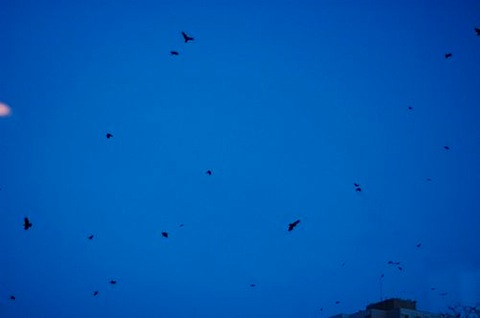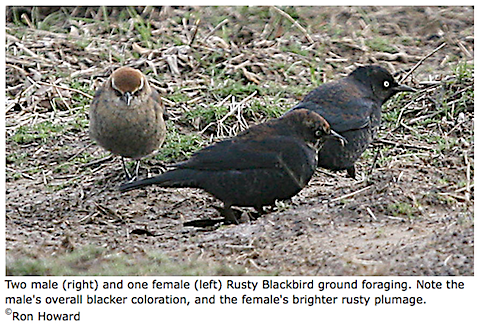Holy Cow!

I have just come home from the biggest Birds and Beers I have ever hosted. It was a blast and everything that I hoped Birds and Beers would become. Birds and Beers is an informal gathering of people of all interests in birds. From the hardcore lister to the beginner. It's a way for people interested in birds to get together, have a beverage, maybe some food and talk some birds. If people have a birding activity to promote--like a banding study, a bird store, a blog, a tour business--they are welcome to share. If someone is interested in finding a bird partner locally or for a day trip--this is a great way to get to know someone face to face.

We had 52 people show up! I was stunned. We took up the whole loft of Joe's Garage, some of the second tier and a large table at the bottom of the stairs. It was almost too much for me, I barely had a chance to meet everyone who came. It was a lively mix of Birds and Beers regulars and many new people. The regulars did a great job of mixing in with the new people at all the tables and I think many friends were made. As I paused a moment and looked around the room at all the birders sharing tales and laughing, I was so happy: this is what I had always imagined for Birds and Beers: a great big birder party. The best part was that there was a great mix of people of all ages. Not just a single twenty-something--several. We even had our youngest member: Micah who I think was eight. It was amazing!
We had all sorts of people with projects to share, including some people from the Wildlife Rehabilitation Center looking for volunteers for the avian nursery, a man who I met years ago in Kearney, NE while watching blackbirds with deformed bills--he leads tours to Nebraska and was looking for people to come watch the crane migration with him. We also had people looking for birding partners in various parts of Minnesota--it was a lively and crowded party of birders.

And then the crows started to stream into Loring Park. I joked that we should start a drinking game--every time you see a crow--Drink! However, no one would ever have been able to leave Joe's Garage had we kept that up. Some went outside, others watched with binoculars from the inside--rivers of noisy crows practically poured into the tops of the trees--it was quite the show.

As I was leaving, the moon was rising behind the roost, I had fun getting photos of the crows silhouetted against the beautiful celestial body. That's a digiscoped image of the crows and moon at the top of this blog entry.
Joe's Garage was fantastic. If you would like to enjoy the roost--try booking a table at dusk before the end of February. I have to give some major props to the wait staff. I said that we typically get 10 - 15 people at Birds and Beers and our poor but intrepid server Ashley took on our huge group and never let us see her get too frazzled. The food was fantastic--how can you not love a place that has a mashed potato bar?
We may have to do this again next winter.
Thanks again to everyone who showed up. The next Birds and Beers will be at the end of February. I'll try to schedule it before I leave for Panama but make no promises.






